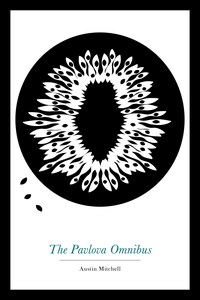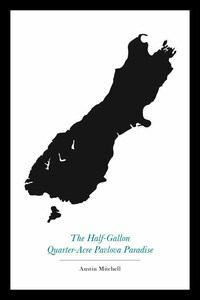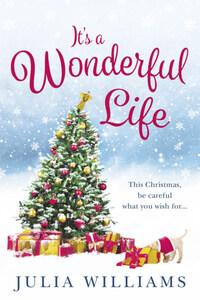Title Page
Preface
Chapter One: Welcome to Godâs Own Country
Chapter Two: A Pavlova Pilgrimage
Chapter Three: Kiwis Come From Lilliput
Chapter Four: Dunedin
Chapter Five: Southland
Chapter Six: Central Otago
Chapter Seven: Christchurch: A Godley Land
Chapter Eight: Absolutely, Positively, Wellington Dunnit
Chapter Nine: Wellington: Women Rule â OK?
Chapter Ten: Maori
Chapter Eleven: Auckland
Chapter Twelve: Ringing The Changes
Chapter Thirteen: Back to the Future
Chapter Fourteen: Global Kiwis
About the Author
Also by Author
Copyright
About the Publisher
Itâs forty years since I first arrived in New Zealand, thirty since Half-gallon Quarter-acre Pavlova Paradise was published. The anniversaries are a good reason to reassess whatâs changed. Even better to come back to the beloved country to see, experience and attempt to understand the new New Zealand.
Second comings to paradise are a unique privilege, given only to the dead or the drug-addicted. So this preface can only be a long gibbering paean of gratitude to all who have made my return to the land of the long white pavlova possible. Itâs been such a wonderful experience. I wanted to prolong it forever rather than actually writing the book or finishing the film, but my delaying tactics generated as much suspicion as one of Helen Clarkâs paintings, or a pair of Tuku Morganâs underpants, to mix the sublime and the corblimey. Sadly, delay had to be finite, particularly at my age, and both jobs had to be finished but I couldnât have done either without a lot of help from a lot of people. Particularly those who went to so much trouble to explain the new New Zealand to Rip Van Mitchell. Theyâd lived it, Iâd only read about it and watched at a distance. I envy them. They helped me.
The idea for the film came from the late Neil Roberts and was picked up by Shaun Brown, both of TVNZ. It was accepted and funded by New Zealand On Air and the Television Corporation. The idea of a book about the pilgrimage was then taken up by Geoff Walker of Penguin, who not only ran with it but extracted it from me forcibly by long distance bullying via the Internet. He saw it edited and prepared with Penguinâs consummate skill.
New Zealand can be very proud of its film and television technicians, particularly the experts who worked with us: Wayne Vinten, Jonathan Mitchell, Michael Monton and Warren Bradshaw. As well as providing wonderful pictures and sound, they were infinitely patient when I carried on asking more and more questions long after theyâd packed up equipment and wanted to go because it was past their bedtimes. Jackie Hay organised the interviews, planned the troop movements around the tens of thousands of kilometres we covered, and did the research.
My old friend, the Rt. Hon. Jonathan Hunt helped, guided and gave me the benefit of his enormous wisdom. Heâs been my guide and friend for so long, I canât work out how Iâve managed to fail so disastrously at so many careers. My way was made easier by several other friends, Stan Rodger and his son Craig, and my former colleagues and older friends, Bob Chapman and Keith Jackson with whom I first worked on our 1960 book â New Zealand Politics in Action (last two words separate). Both were patient in explaining the changes since then to me. The NZ-UK link helped too, bringing me out to New Zealand for a debate which first prepared me for the changes in the New Zealand meat industry, because I was ritually slaughtered and chopped into small pieces.
Production and editing were huge jobs for a technical Luddite like me but Joyce Benton, Pat Murray, Emma Sandler and Mark Meilack saved me from my own incompetence, turning scribble into text and worked above and beyond the call of duty to finish the manuscript. The errors are mine, the achievement that of this devoted team.
Most of all I should thank my wife Linda who made sense of my ramblings on film and pushed me into finishing the book almost in time. She also kindly excused me my usual heavy household duties and transferred me to a light schedule to give me time to write it.
âLinda makes things happen,â as Bryan Gould once said. Mainly to me, but she did make all this happen and without her none of it would have been possible. Except the photographs, for which I alone and unaided am responsible. Unfortunately, having turned photography from a hobby into a disease, working on the principle that ten million monkeys with ten million typewriters can eventually write Shakespeare, and applying that to cameras in the hope of taking a Cartier-Bresson, the result was a hundred thousand pictures. Regrettably Penguin declined to publish all of them in this book. I was reduced to thirty happy snaps.
Itâs all been a wonderful experience. Which makes me wonder why the hell I left New Zealand in the first place. Except that if I hadnât Iâd never have been able to come back and catch up on the change, the excitement and the misery. Iâve missed out on a lot of good times and some bad, but now Iâve seen the future and it works. For New Zealand. It has become exciting and dynamic in a way I could never have thought and, if the truth be told, never expected it to be back in those dim and distant sixties. Good on yer youse Kiwis.










